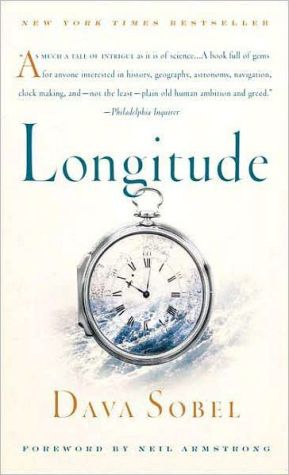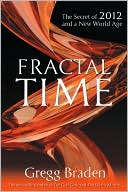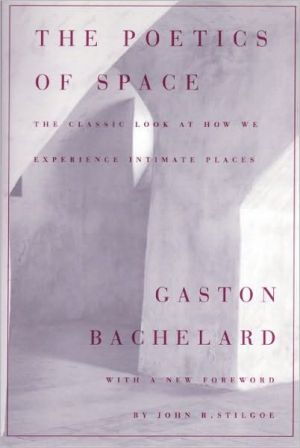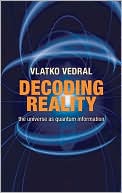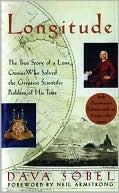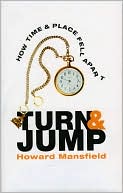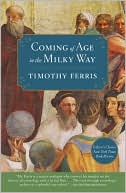From Eternity to Here: The Quest for the Ultimate Theory of Time
"An accessible and engaging exploration of the mysteries of time."\ -Brian Greene, author of The Elegant Universe\ Twenty years ago, Stephen Hawking tried to explain time by understanding the Big Bang. Now, Sean Carroll says we need to be more ambitious. One of the leading theoretical physicists of his generation, Carroll delivers a dazzling and paradigm-shifting theory of time's arrow that embraces subjects from entropy to quantum mechanics to time travel to information theory and the...
Search in google:
"An accessible and engaging exploration of the mysteries of time." -Brian Greene, author of The Elegant Universe Twenty years ago, Stephen Hawking tried to explain time by understanding the Big Bang. Now, Sean Carroll says we need to be more ambitious. One of the leading theoretical physicists of his generation, Carroll delivers a dazzling and paradigm-shifting theory of time's arrow that embraces subjects from entropy to quantum mechanics to time travel to information theory and the meaning of life. From Eternity to Here is no less than the next step toward understanding how we came to exist, and a fantastically approachable read that will appeal to a broad audience of armchair physicists, and anyone who ponders the nature of our world. The Washington Post - Justin Moyer Sean Carroll…does his best to make the arcane accessible…Though he exiles much of the math to an appendix, Carroll keeps it real, getting at the complex guts of cutting-edge cosmology
Prologue The nature of time, the importance of entropy, and the role of cosmology 1Pt. 1 Time, Experience, and the Universe1 The Past Is Present Memory 92 The Heavy Hand of Entropy 263 The Beginning and End of Time 44Pt. 2 Time In Einstein's Universe4 Time Is Personal 675 Time Is Flexible 826 Looping Through Time 93Pt. 3 Entropy and Time's Arrow7 Running Time Backward 1198 Entropy and Disorder 1439 Information and Life 17910 Recurrent Nightmares 20211 Quantum Time 228Pt. 4 From the Kitchen to the Multiverse12 Black Holes: The Ends of Time 25913 The life of the Universe 28714 Inflation and the Multiverse 31515 The Past Through Tomorrow 33916 Epilogue 366Appendix Math 377Notes 385Bibliography 411Acknowledgments 421Index 423
\ Justin MoyerSean Carroll…does his best to make the arcane accessible…Though he exiles much of the math to an appendix, Carroll keeps it real, getting at the complex guts of cutting-edge cosmology\ —The Washington Post\ \ \ \ \ Publishers WeeklyNo one is better equipped to take readers on a rollercoaster ride through time, space, and the origins of the universe than Caltech theoretical physicist Carroll, cofounder of Cosmic Variance, one of the top science blog sites. “We're not thinking small here,” Carroll announces with glee before launching into his topic. Time is a medium we move through and a way to sequence events. But the “Arrow of Time' is also the only feature of the universe with one irreversible direction: time goes forward. This fact plays an important role in the second law of thermodynamics: the entropy (disorderliness) of an isolated system either remains constant or increases with time. This has implications for our understanding of the “Big Bang” origins of the universe. We may not be able to travel back in time, but we can find ways to peer back across it and see clues to how the universe evolved, thanks to such discoveries as quantum mechanics and relativity theory. Carroll writes with verve and infectious enthusiasm, reminding readers that “science is a journey in which getting there is, without question, much of the fun.” Illus. (Jan.)\ \ \ Library JournalA research physicist at Caltech and one of the founders of the popular group blog Cosmic Variance (http://blogs.discovermagazine.com/cosmicvariance/), Carroll—not to be confused with biologist Sean B. Carroll (Endless Forms Most Beautiful)—expounds on a long-standing puzzle in physics. At a microscopic level the laws of physics are valid regardless of whether time runs forward or backward. However, in the real world all of us (including scientists) experience "time's arrow," which points in only one direction. More technically, scientists note that entropy (a measure of disorder) either increases or stays the same in the observable universe; it never decreases within a closed system. It appears that the universe's entropy was very low when the Big Bang occurred 14 billion years ago but has been increasing ever since. This strikes some researchers, including Carroll, as an uncomfortable oddity that needs further explanation. VERDICT Carroll employs an easygoing, colloquial style of explanation to explore challenging issues of cosmology. His approach is effective, but readers must still be willing to work through much heavy thinking. Highly recommended for fans of Stephen Hawking and those with at least some formal training in the physical sciences and/or philosophy.—Jack W. Weigel, Ann Arbor, MI\ \ \ \ \ Kirkus ReviewsA revealing look into the fourth and thorniest dimension. Time, a famous scientist pointed out, is nature's way of making sure everything doesn't happen at once. Carroll (Theoretical Physics/Caltech) has read all the literary and scientific writing on the subject but has plenty of his own opinions. In his debut, the author writes in accessible prose, so readers who make the effort will absorb an avalanche of information. Everyone knows one needs three dimensions to locate anything, but without the time no one can find a specific event. As a result, educated readers accept time as a legitimate dimension, yet no one can shake the feeling that it's odd. All laws of physics remain unchanged everywhere, and none assert that time can't run backward, but it never does. Carroll's explanation relies heavily on the second law of thermodynamics (to which he returns again and again), which states that all systems in the universe tend to become disorganized (increase in entropy). No law forbids an omelet from spontaneously turning back into an egg, but it's extremely unlikely. Travel in time is simple provided one travels forward. Since relativity requires moving clocks to run slower than those at rest, one can speed up time by simply traveling and then returning. Sadly, travel into the past would produce paradoxes and, the author stresses, paradoxes don't happen. Carroll delves deeper than the typical PBS science hour. Understanding time requires an acquaintance with entropy, relativity, cosmology, thermodynamics and statistical mechanics, which Carroll enthusiastically delivers at great length. Not for the scientifically disinclined, but determined readers will come away with a rewarding grasp of acomplex subject. Agents: Katinka Matson, John Brockman/Brockman, Inc.\ \ \ \ \ Publishers WeeklyCarroll explains the scientific studies of time in an accessible text for the lay reader, but one that proves prohibitively confusing for the lay listener. Sentences are stuffed with important, sometimes esoteric information that takes going over several times, making the listening choppy. And those prone to occasionally tune out for a sentence here or there will find it nearly impossible to follow. Erik Synnestvedt also hinders the production; though he reads in a clear and easy-to-follow voice, he never establishes a significant pattern of emphasis to guide listeners through the more technical and nuanced prose. His soft and rhythmic voice is slightly soporific and does little in helping the listener concentrate. A Dutton hardcover (Reviews, Nov. 2). (Feb.)\ \ \ \ \ From the Publisher"Carroll employs an easygoing, colloquial style of explanation to explore challenging issues of cosmology." —-Library Journal\ \

